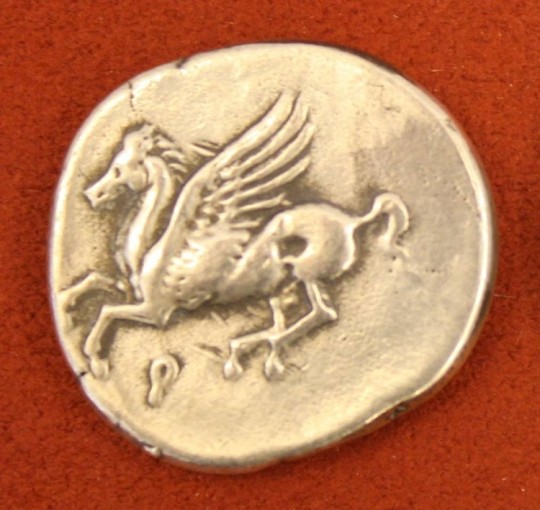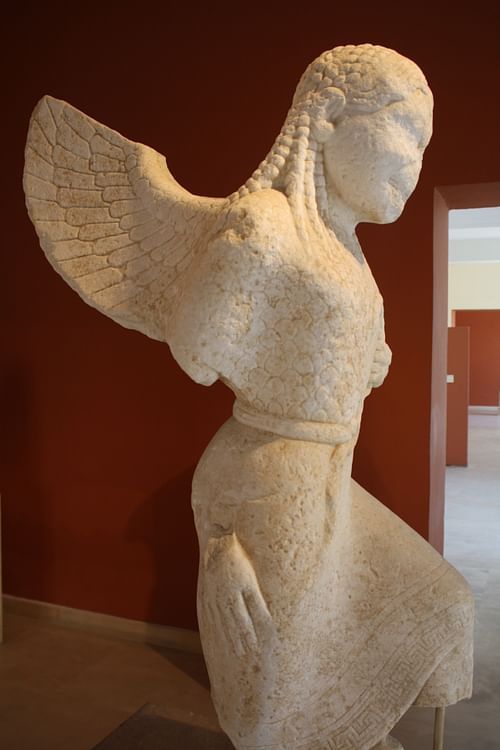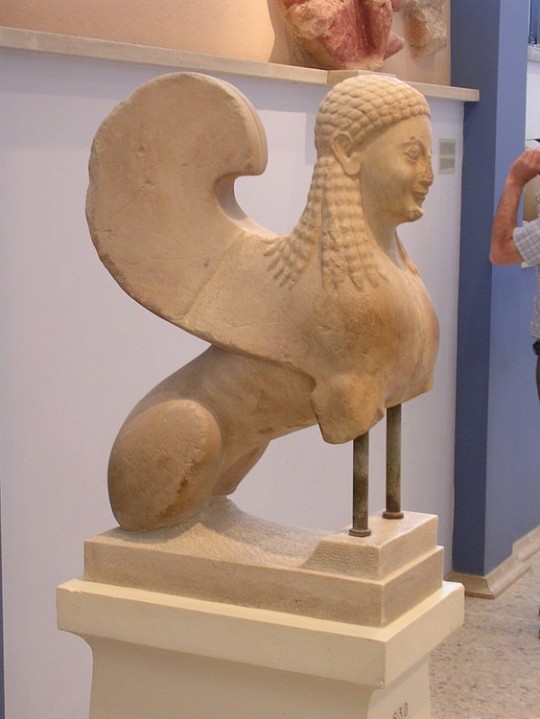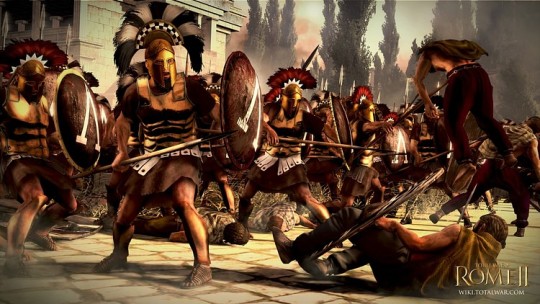#6thcenturyBCE
Explore tagged Tumblr posts
Photo

Pegasus
Pegasus (or Pegasos) is a winged-horse from Greek mythology which was fathered by Poseidon and was born from the severed neck of the gorgon Medusa, slain by Perseus. At the same time and in the same way, Chryasor was also born. Poseidon gave Pegasus to his son Bellerophon who put Pegasus to good use in his famous battle with the Chimaera.
The myth of Bellerophon begins with the hero visiting Tiryns and enjoying the hospitality of the city's king Proitos. However, trouble started when Stheneboia, the king's wife, fell in love with the hero and made inappropriate advances. Bellerophon, being a good guest, politely rejected these advances but predictably, Stheneboia saw red and went before the king and accused the visitor of attempting to seduce her. In punishment, Bellerophon was sent by Proitos to serve his father-in-law Iobates, King of Lykia. On arrival, Bellerophon was set a series of dangerous and impossibly difficult tasks, chief amongst them being to destroy the fearsome and rather bizarre Chimaera. This fire-breathing creature was a terrible mix of a lion's body with a snake for a tail and the head of a goat sprouting from its back. To aid him in this task, Bellerophon was fortunate to have at his disposal Pegasus. In some accounts he found the horse at the fountain of Pirene near Corinth, and Hesiod suggests this fact explains the name Pegasus, derived from 'water'- pēgē. Taming the horse with the help of Athena, Bellerophon rode (and flew) Pegasus and managed to kill the monstrous Chimaera with his spear.
Bellerophon and Pegasus went on to enjoy further success with other challenges Iobates set the hero including a battle with the Amazons. However, becoming rather boastful and thinking he could fly high enough on his winged steed to take his place amongst the immortal gods, Bellerophon was thrown by Pegasus and fell unceremoniously back to earth. Meanwhile, Pegasus kept on going and on reaching Mt. Olympus, he was given to Eos who was responsible for bringing Dawn across the sky each day. According to Hesiod in his Theogony, Pegasus also brought Zeus his thunder and lightning whenever needed.
Pegasus is also credited with creating a number of springs with a stamp of his hoof. Most famous of these were the Hippocrene spring on Mt. Helicon, close to the grove sacred to the Muses, and the spring at Troezen.
Pegasus appeared on Greek pottery, the earliest being Corinthian wares from the 7th century BCE. Pegasus was also a popular design on coins, in particular from Corinth from the 6th century BCE. A famous representation in sculpture is from the pediment of the Temple of Artemis on Corcyra (c. 580 BCE). The Bellerophon and Pegasus myth was also a popular subject in Roman art - especially engraved semi-precious stone cameos and floor mosaics - where the horse became symbolic of immortality.
YouTube Follow us on YouTube!
Continue reading...
51 notes
·
View notes
Photo

Paros
Paros is an island in the Cyclades group in the central Aegean. It is the third largest island of the Cyclades and its position on important sea routes between mainland Greece and the coast of Asia Minor made it an important centre from the early Bronze Age through to Roman times. The island was also famous for the high quality of its marble which became a popular material for sculptors and architects throughout antiquity.
Bronze Age Paros
First inhabited from c. 3200 BCE (or perhaps even earlier), important settlements from the Early Cycladic Period include those at Drios, Avyssos, Galana, Gremna, Kampos, and Plastiras. The relatively high level of culture in the early Bronze Age is attested by the wealth of decorated pottery finds and in Cycladic sculpture which produced elegant marble figures rendered in a minimalistic style.
At the island's capital Parikia (Paroikia) on the west coast the first indications of settlement date to the early 2nd millennium BCE and the area was continuously occupied through Minoan and Mycenaean times and settled by colonists from Attica c. 1000 BCE being occupied until around 700 BCE. On the north coast at Naoussa there was a major Mycenaean settlement which prospered in the 13th century BCE but was destroyed in c. 1200 BCE. Nevertheless, the site was reoccupied from the 10th century BCE and once again enjoyed a period of prosperity from the 9th to the mid-7th century BCE. Koukounaries on the east coast was also an important Mycenaean centre in the 13th and 12th centuries BCE and continued into the mid-7th century BCE. It was here at Koukounaries that the oldest temple on the island was built, the temple to Athena dating to c. 700 BCE and which survived into Classical times.
Continue reading...
59 notes
·
View notes
Photo

Sphinx
A Sphinx is a mythical creature with the body of a lion, most often with a human head and sometimes with wings. The creature was an Egyptian invention and had a male head - human or animal; however, in Greek mythology, the creature had the head of a woman. The sphinx is also present in the art and sculpture of the Mycenaean, Assyrian, Persian and Phoenician civilizations.
Egyptian Sphinxes
Sphinxes were first created by the Egyptians and usually wore a nemes (head-dress) as worn by Pharaohs. Examples exist of sphinxes with human faces but surrounded by a lion's mane, particularly from Nubia, and in the New Kingdom the head was sometimes that of a ram and representative of Amun. The exact date when the first sphinx appeared is not known and the most famous sphinx of all, the Great Sphinx of Giza, has not been precisely dated; some scholars date it as far back as the reign of Cheops, ca 2500 BCE. There is a story that in the Eighteenth Dynasty, Pharaoh Thutmose IV, when he was a mere prince, went on a hunting expedition and fell asleep in the shadow of the Sphinx. Whilst asleep he dreamt that the Sphinx spoke to him and promised that he would become king if he cleared the sands that had accumulated around the feet of the statue. In the reign of Chephren, sphinxes became more widespread and they were usually placed as guards outside or beside a mortuary temple, tomb or funerary monument.
Continue reading...
52 notes
·
View notes
Photo

Sparta
Sparta was one of the most important city-states in ancient Greece and was famous for its military prowess. The professional and well-trained Spartan hoplites with their distinctive red cloaks and long hair were probably the best and most feared fighters in Greece, fighting with distinction at key battles against the Persian army at Thermopylae and Plataea in the 5th century BCE.
The city of Sparta was also in constant rivalry with the other major Greek cities of Athens and Corinth and became involved in two protracted and hugely damaging conflicts, the Peloponnesian Wars of the mid- to late-5th century BCE and the Corinthian Wars of in the early 4th century BCE.
Sparta in Mythology
In Greek mythology the founder of the ancient city was Lacedaemon, a son of Zeus, who gave his name to the region and his wife's name to the city. Sparta was also an important member of the Greek force which participated in the Trojan War. Indeed, the Spartan king Menelaus instigated the war after the Trojan prince Paris abducted his wife Helen, offered to Paris by the goddess Aphrodite as a prize for choosing her in a beauty contest with fellow goddesses Athena and Hera. Helen was said to have been the most beautiful woman in Greece and Spartan women in general enjoyed a reputation not only for good looks but also spirited independence.
Continue reading...
21 notes
·
View notes
Photo

Satyr
Satyrs (aka silens) are figures from Greek mythology who were followers of the god of wine Dionysos. Satyrs were often guilty of excessive sexual desires and overindulgence of wine. Men with a horse's tail and ears or men with goat legs, these shaggy and unruly creatures lived wild in the forests and symbolised the dangers of unrestraint.
Satyrs are frequently depicted in ancient art, typically causing havoc by attacking women and performing lewd tricks with wine cups. They could be more industrious when Dionysos put them to work making wine. The most famous individual satyr is wise old Silenus, who was the tutor of Dionysos. A specific genre of Greek theatre was the satyr play which involved actors dressing up as satyrs and where there was an entire chorus of satyrs.
Wild Men of Excess
The name 'satyr' was used in the Peloponnese of ancient Greece while 'silen' was used in Attica. At some point in the 6th century BCE, the names came to be used interchangeably in Greek literature and in labels on Greek pottery.
Satyrs often appear in Greek myths as lustful and wine-loving wild men of nature who had some animal features. Intelligent yet mischievous, lewd yet skilled in music, the physique of the satyrs reflects their seemingly conflicting personality traits. Early depictions of satyrs show them as men with a horse's tail and ears while later versions are half-man and half-goat, sometimes with entire goat legs or just hoofed feet. The elements of goat may reflect a later association with the pastoral god Pan, also thought to inhabit forest areas. Satyrs often have snubbed noses, wild-looking hair, and long beards. A weapon of the satyr was the thyrsus, a staff entwined with ivy and topped with a pine cone. These forest dwellers were frequent companions or followers of Dionysos, the Greek god of wine and merriment, and made up his thiasos or troupe, which included nymphs and maenads.
The cult to Dionysos involved orgiastic rituals where the participants - both men and women - were taken over by a Dionysian frenzy of dancing and merriment to such a degree that they transcended themselves. The satyrs came to represent the more excessive side of the Dionysos cult. With their demonic energy, satyrs spent their time chasing and sometimes raping animals or they were employed by their master in wine-making. Consequently, with their transformation of nature into manufactured products, the satyrs bridge the gap between wild abandon and the creation of ordered culture.
Satyrs had a connection with several major festivals in the Greek religion. People dressed as satyrs for processions like the Anthesteria of Athens (a festival which honoured Dionysos and the drinking of new wine), in Alexandria in the Hellenistic period, and in Rome. Satyrs were involved in secret initiation ceremonies for some Greek cults, particularly those involving a connection with the next life and funerary rituals.
Continue reading...
3 notes
·
View notes